Yesterday was 26 April 2023, the day that the ADM legislation was due to become fully operative and the day the Decision Support Service (DSS) was due to swing into action.
Having been waiting, with bated breath, for DSS Directions and ministerial regulation (as mandated by the legislation), nothing had yet arrived.
Early on the morning of 26 April (before 8am) both the DSS website and the website of the Mental Health Commission (MHC) were carrying stories heralding the landmark new service opening its doors to the public. Bear in mind that nothing had yet been officially launched, nothing had been signed, but we were nonethless treated to quotations from An Taoiseach and from the Director of the DSS, the Chairman of the MHC, and the Chief Executive of the MHC about how wonderful this new service is going to be.
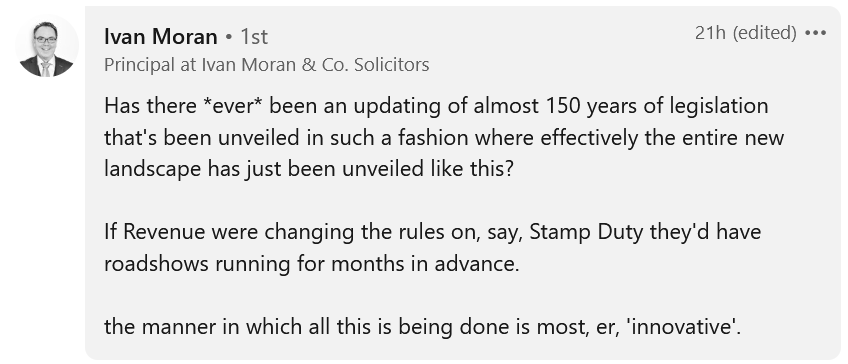
Meanwhile, over on the Courts Service, the relevant website sections were ‘Under Construction’.
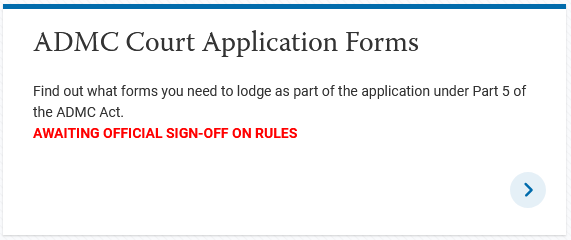
If one tried to visit one of these sections (just to see what was being constructed) one was met with a ‘404 Not Found’ error.

On the government press release website, nothing.
This situations persisted until lunchtime, at which point I stopped bating my breath and took a short break from monitoring developments (something of an oxymoron in this case, I think you will agree).
After lunch, back to the excitement.
As we had it on good authority that the legislation was indeed going to become fully operative, I decided to see how one would now go about creating an Enduring Power of Attorney with the DSS.
The DSS Portal
It quickly became clear that, in order to do business with the DSS, one must use the ‘MyDSS’ portal. (I can already hear the joyful cheers from those who need assistance with decision making).
In order to access the portal, one must register with MyDSS.
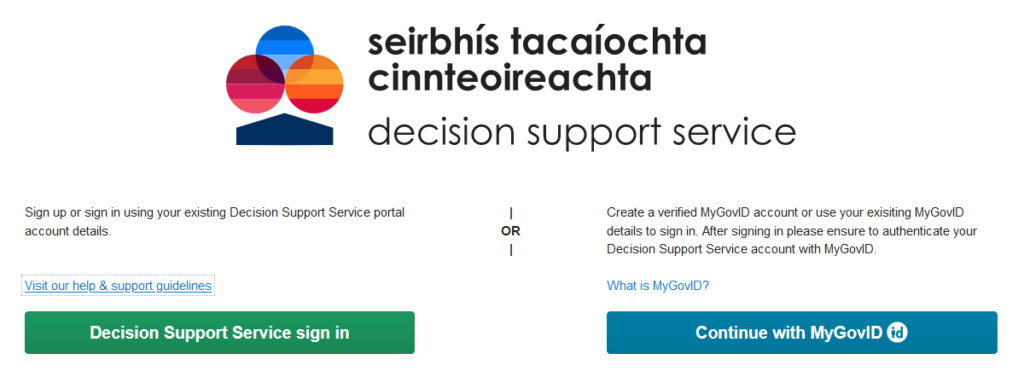
This should be reasonably straightforward, you think to yourself, until you find that it isn’t. (Oh, and the ‘Visit our help & support guidelines’ link doesn’t work – it brings you to a ‘Page not found’).
One user registered and was sent a 6-digit verification code by e-mail, but was then told that the e-mail address (to which the 6-digit verification code had just been sent) did not exist on the DSS database:
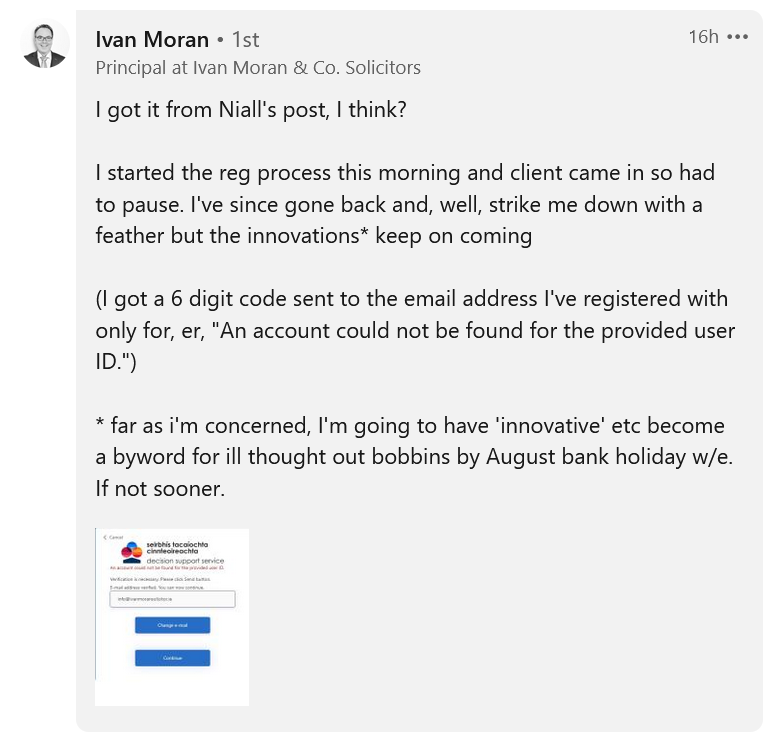
I had similar experiences myself. My situation was slightly different because I already had (or so I thought) a MyGov ID, so I used that link (on the right hand side in the image above) rather than registering directly with the DSS.
That seemed to work, until I was told that my MyGov ID is only a ‘basic’ account and that I would need a ‘verified’ account in order to access the full range of DSS services.

With a basic account I can access MyDSS but only, it seems, to amend my own personal information, to view invoices and payments, or to make an objection to a decision support arrangement:
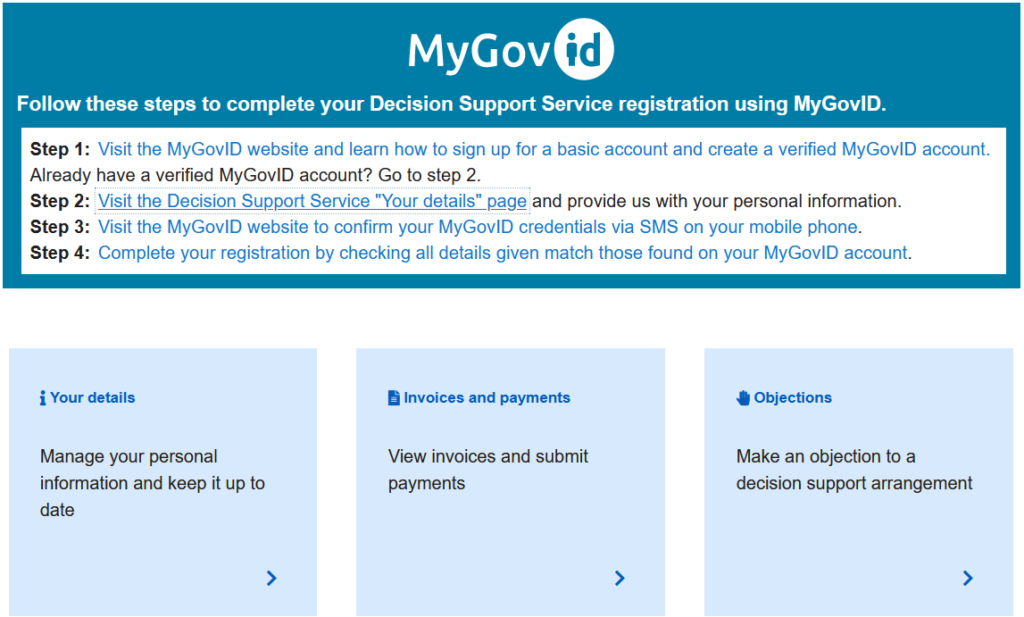
In order to get a verified MyGov ID, it is necessary to attend in person at an Intreo office (view list) with proof of identity and proof of address.
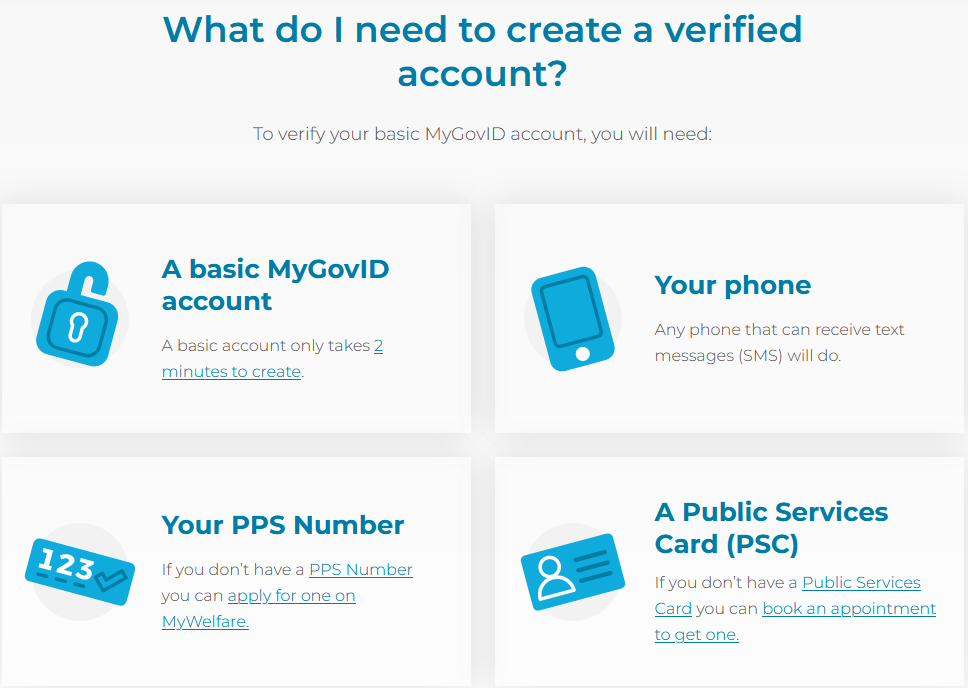
I hopped on my bike and cycled the 8km to my nearest Intreo office, bringing my driving licence and a recent utility bill with me.
I arrived at the Intreo office over an hour before it was due to close, but was still told I wouldn’t be seen that day.
I was told that if I wanted to get seen on a walk-in basis I would have to be in the queue outside before the office even opened in the morning.
I was told I should avoid Thursdays, at this particular office, because the queue started building very early and then, when the doors opened, 24 tickets were given out for appointments and ‘that was that’.
I was told that there are Intreo offices where one can make an advance appointment for a PSC but was warned that the appointment could be 2-3 weeks into the future.
I asked what day I should attend, and at what time, to maximise my chances. I was told Friday and was told to be in the queue before the office opens.
“What time does the office open?”
“Ah, sometime between 9 and 9.15.”
I went home. I’ll try on Friday.